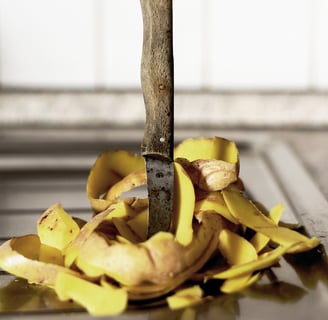Mastering Low-Waste Cooking: A Guide to Sustainable Culinary Practices
In a world increasingly aware of environmental impact, the culinary realm is embracing a movement towards low-waste cooking. This not only reduces our carbon footprint but also inspires creativity in the kitchen. Let's delve into the art of low-waste cooking and discover practical tips for a more sustainable culinary journey.


Introduction:
In a world increasingly aware of environmental impact, the culinary realm is embracing a movement towards low-waste cooking. This not only reduces our carbon footprint but also inspires creativity in the kitchen. Let's delve into the art of low-waste cooking and discover practical tips for a more sustainable culinary journey.
Understanding the Concept:
Low-waste cooking revolves around the philosophy of using ingredients to their fullest potential, minimizing food waste at every stage of the cooking process. From root-to-stem vegetable use to utilizing meat and fish entirely, this approach is about celebrating every part of an ingredient.
Tips for Low-Waste Cooking:
1. Menu Planning:
Begin by planning your meals thoughtfully. Consider using ingredients that can be repurposed in multiple dishes throughout the week, reducing the likelihood of unused items.
2. Whole Ingredient Usage:
Explore creative ways to use entire ingredients. For instance, use citrus peels for zesting and making flavorful extracts, and incorporate vegetable tops and stems into stocks and broths.
3. Nose-to-Tail and Root-to-Stem Cooking:
Adopt a nose-to-tail philosophy with meat and fish, ensuring that all parts are used for various dishes. Similarly, practice root-to-stem cooking with vegetables, using leaves, peels, and stalks in your recipes.
4. Preservation Techniques:
Embrace preservation methods like pickling, fermenting, and canning to extend the shelf life of perishable items. This not only reduces waste but adds unique flavors to your dishes.
5. Composting:
Set up a composting system for kitchen scraps. Composting not only diverts waste from landfills but also creates nutrient-rich soil for gardening.
6. Smart Storage:
Proper storage is crucial for preventing food spoilage. Use airtight containers, and store fruits and vegetables appropriately to maximize their freshness.
7. Repurposing Leftovers:
Get creative with leftovers. Turn yesterday's roast into a sandwich or transform vegetable scraps into a flavorful broth.
Low-Waste Recipes to Try:
1. Zero-Waste Vegetable Stir-Fry:
Create a colorful stir-fry using a variety of vegetables, making sure to utilize stems, peels, and tops.
2. Sustainable Seafood Chowder:
Craft a hearty chowder using sustainable fish and utilizing the entire fish for a rich broth.
3. Citrus-Infused Water:
Make a refreshing drink using citrus peels and leftover herbs for a burst of flavor without waste.
Conclusion:
Low-waste cooking is not just a trend; it's a sustainable lifestyle choice that benefits both the planet and your culinary creativity. By implementing these practices in your kitchen, you contribute to a more sustainable food future while savoring the full potential of every ingredient.
Happy cooking, with a conscience!